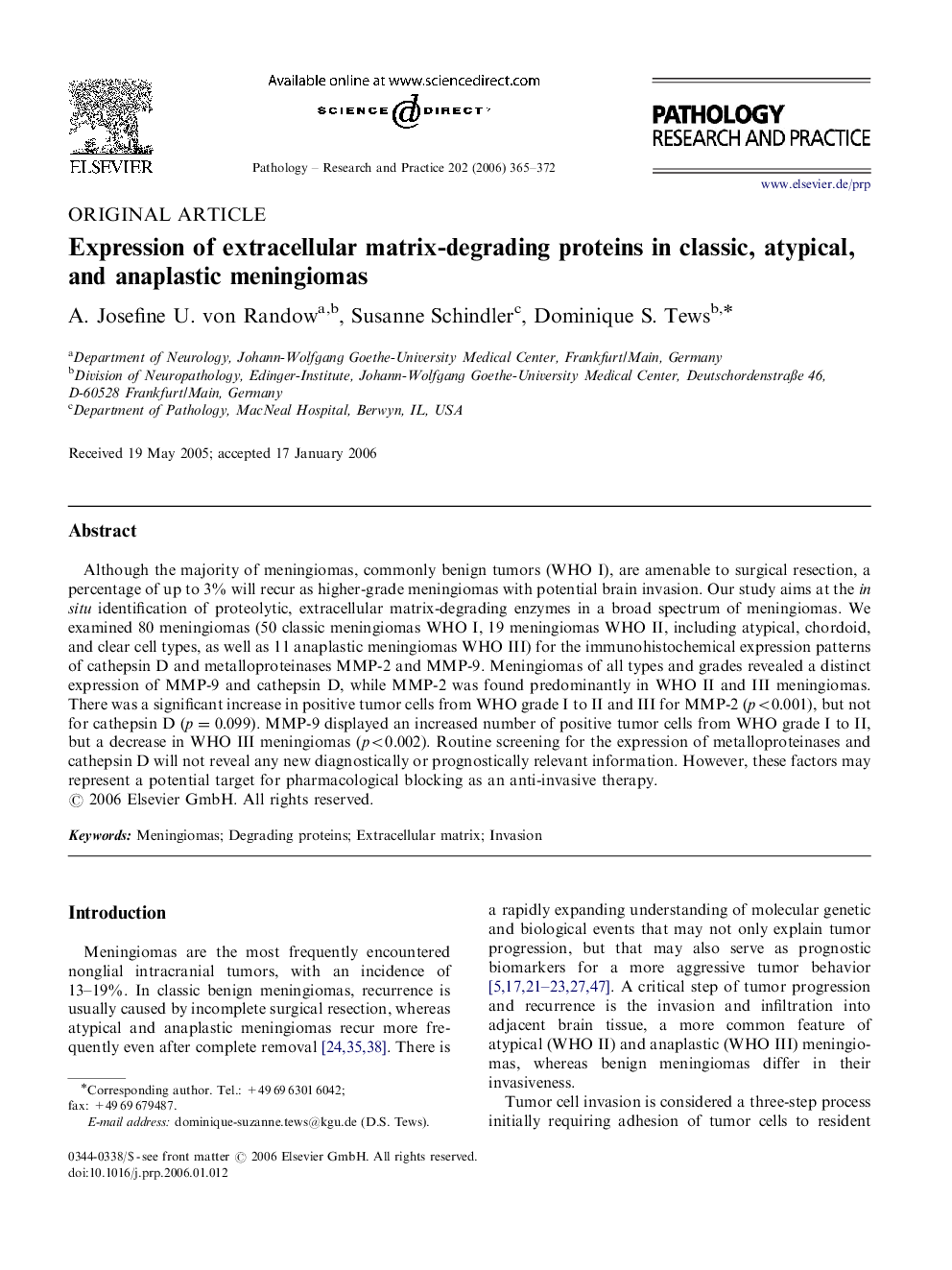| Article ID | Journal | Published Year | Pages | File Type |
|---|---|---|---|---|
| 2156700 | Pathology - Research and Practice | 2006 | 8 Pages |
Abstract
Although the majority of meningiomas, commonly benign tumors (WHO I), are amenable to surgical resection, a percentage of up to 3% will recur as higher-grade meningiomas with potential brain invasion. Our study aims at the in situ identification of proteolytic, extracellular matrix-degrading enzymes in a broad spectrum of meningiomas. We examined 80 meningiomas (50 classic meningiomas WHO I, 19 meningiomas WHO II, including atypical, chordoid, and clear cell types, as well as 11 anaplastic meningiomas WHO III) for the immunohistochemical expression patterns of cathepsin D and metalloproteinases MMP-2 and MMP-9. Meningiomas of all types and grades revealed a distinct expression of MMP-9 and cathepsin D, while MMP-2 was found predominantly in WHO II and III meningiomas. There was a significant increase in positive tumor cells from WHO grade I to II and III for MMP-2 (p<0.001), but not for cathepsin D (p=0.099). MMP-9 displayed an increased number of positive tumor cells from WHO grade I to II, but a decrease in WHO III meningiomas (p<0.002). Routine screening for the expression of metalloproteinases and cathepsin D will not reveal any new diagnostically or prognostically relevant information. However, these factors may represent a potential target for pharmacological blocking as an anti-invasive therapy.
Related Topics
Life Sciences
Biochemistry, Genetics and Molecular Biology
Cancer Research
Authors
A. Josefine U. von Randow, Susanne Schindler, Dominique S. Tews,
